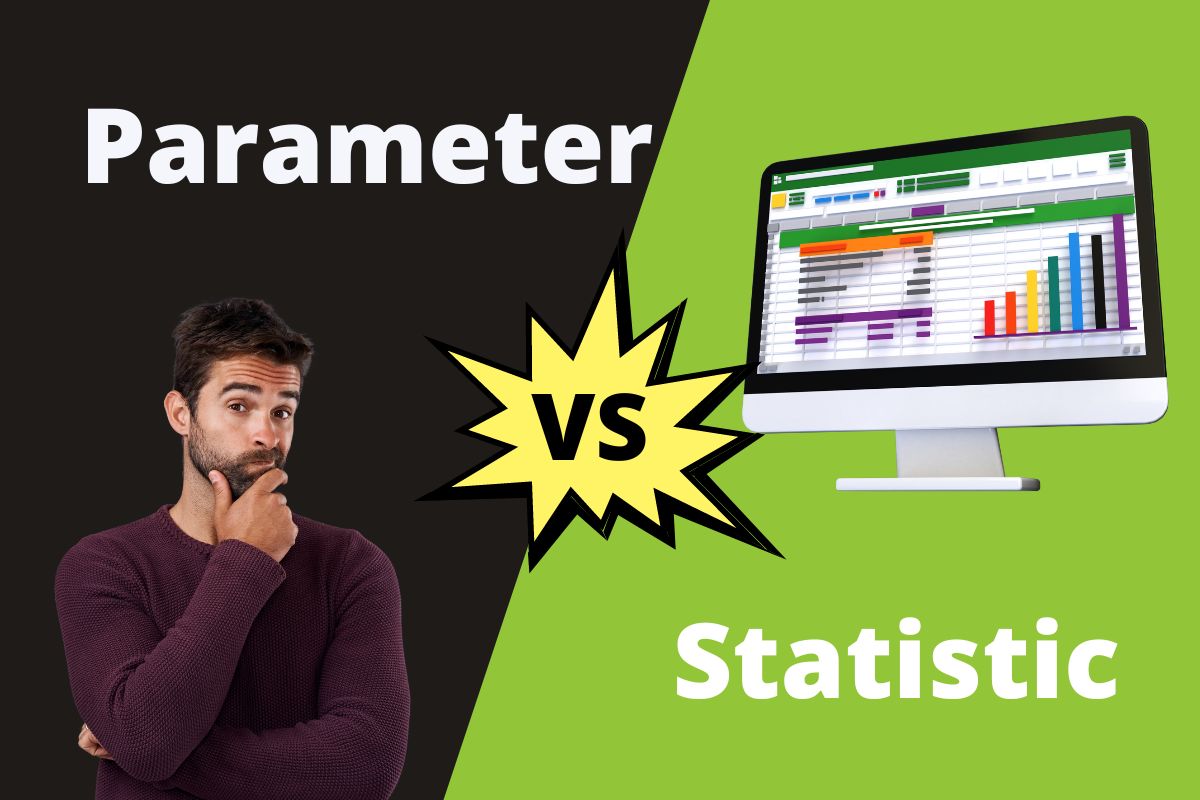A parameter is an accurate number describing the exact number of the entire population. At the same time, a statistic is a number representing a sample of people.
Parameter and statistic are two crucial concepts in sample size. But due to the similarities, it’s not easy to tell the difference between them.
Table of Contents
Parameter vs Statistic
| Parameter | vs | Statistic |
| Describe an accurate number of the whole population | Meaning | Representation of a fraction of the entire population |
| Greek letters like- μ, σ, ρ, etc. | Notation | Latin letters like- x̄, p̂, s, n, etc. |
| Fixed and unknown | Numerical value | Varied and known |
| Smaller sample size | Sample size | Larger sample size |
| More accurate because they are the representation of smaller groups of people | Accuracy | Less accurate because they are the representation of the certain sampling group |
| Mean, median, and mode | Types | Inferential statistics and descriptive statistics |
What Does Parameter Mean?
The parameter is a fixed number that describes a mass unit. A population parameter would be a fixed number representing an entire group with the same characteristics.
Parameter Example:
If you’re a teacher and ask your students what their favorite subject is, and half of them say mathematics. You have a parameter here, which is that 50% of the students love mathematics.
Common Modes of Measuring Parameters
- Mean– Mean is also called average and is one of the most popular modes among the two modes. It is used to describe the distribution of ratios and intervals in data.
- Median– Median calculates variables assessed in intervals, ordinals, and ratio scales. We get the median by arranging the data from the smallest to the most significant order and selecting the number in between. In short, the median is the middle value of the total numbers.
- Mode- The mode is often the most significant occurring number in a data distribution. The mode shows the most common value or number in a data distribution.
These are the central tendency measuring units that present how data behaves in a particular distribution.

What Does Statistic Mean?
Statistics is also concerned with collecting, tabulating, and interpreting numerical data. It is the sample proportion of a given population. Similar to a parameter, a statistic also represents a portion of the population with similar characteristics.
However, it doesn’t give a fixed number.
The study of statistics includes the collection, presentation, analysis, and inference of data from the quantitative study.
Statistic Example
For example, if you’re trying to take a survey of how many people love pizza in your country, it’s impossible to go and ask each person. You’d survey a representative sample or a portion of them and extrapolate the answer. This is called statistics.
Primary Areas of Statistics
Inferential statistics
Statistical inference is a sub-branch of statistics that utilizes various analytical tools to infer population data from the sample data. This helps to determine the accuracy of the survey or the data.
Inferential statistics are used for the generalization of large groups of data. For example, suppose you want to know the average demand for a particular product. In that case, you’ll use statistical inference to understand the buying customers’ habits for similar products.
Descriptive statistics
Descriptive statistics present the sample data’s variability, central tendency, and distribution. These are brief informational coefficients that can either represent the sample of an entire population or the whole population.
Descriptive statistics are further divided into measures of variability (variance, standard deviation, minimum and maximum variables) and measures of central tendency (mean, median, mode).

Statistic vs Parameter: Key Differences
Here are the main differences between the parameter and statistics-
Accuracy
The parameter is always more accurate than statistics because the parameter is the direct survey of every possible representation of the members of the population.
Statistics are not as precise as the parameter because it is not the exact representation of each member of the population.
Sample statistics only represent the interest or characteristics of the representative members of a large population.
Sample Size
Another difference between these two survey methods is the sample sizes. Because parameters survey the entire group, their sample size is smaller than statistics’ large population size.
Notation
How the examples of parameters and statistics are stated is also a differentiating factor. Examples of statistics always feature Latin letters like X-bar (Ẍ) or p-hat (p̂). But examples of the parameter always feature Greek letters like Mu (μ) or lowercase sigma (𝛔).
Types
There are three measuring modes: mean, median, and mode. As opposed to that, there are two types of statistics- inferential statistics and descriptive statistics.
Statistics Vs Parameters: Quick Glance At The Differences
Do you understand the difference between statistics and parameters? While the purpose of these mathematical concepts is the same, the main difference is the mode of representation.
Hopefully, the next time you have to conduct real-world quantitative research, you will know which mode to opt for.
If you’ve enjoyed this article, check out our post on the difference between speed and velocity.

